Table of Contents
Every winter, the city of Harbin in northeastern China transforms into a glowing wonderland of ice and snow. The Harbin International Ice and Snow Sculpture Festival is one of the largest and most spectacular winter events in the world, attracting millions of visitors who come to marvel at its illuminated sculptures, frozen castles, and festive atmosphere.
If you’re planning a winter trip to Asia, this festival offers a once-in-a-lifetime experience — blending Chinese creativity, international art, and the magic of winter.
What Is the Harbin International Ice and Snow Sculpture Festival?
First held in 1985, the Harbin International Ice and Snow Sculpture Festival has grown into a world-renowned celebration of winter artistry. Every year, local and international sculptors carve massive blocks of ice from the nearby Songhua River to create stunning ice palaces, temples, animals, and entire miniature cities.
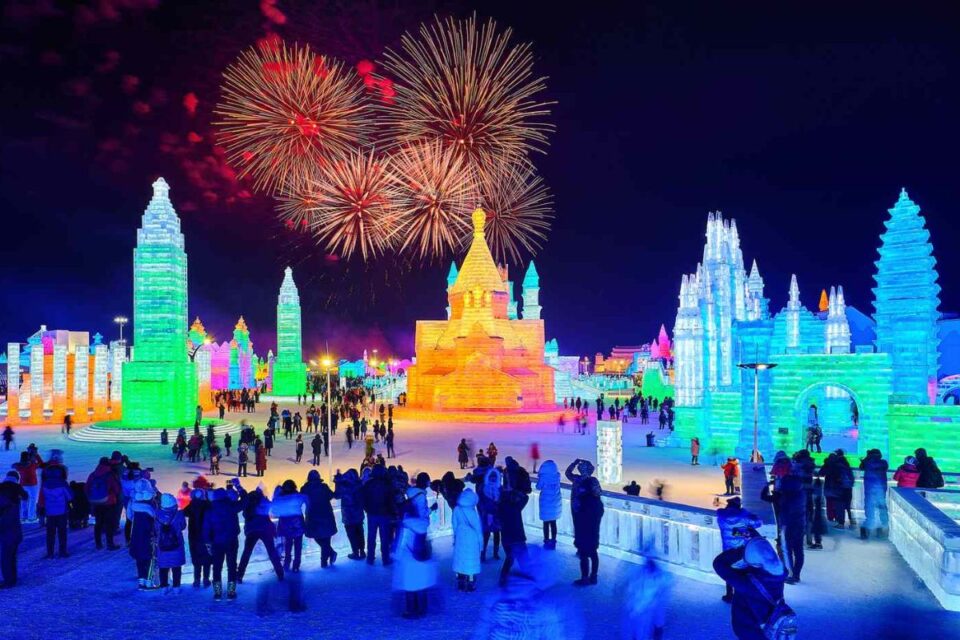
The festival’s creative themes change each year, often reflecting Chinese culture, mythology, and world landmarks. At night, LED lights illuminate the sculptures, turning Harbin into a glowing, dreamlike city of color and light.
Official 2025 Dates & Location
The 2025 Harbin Ice and Snow Festival is expected to begin in early January and continue through late February, depending on weather conditions.
The festival is spread across three main venues:
- Harbin Ice and Snow World – The largest and most famous area, featuring towering illuminated ice castles and interactive displays.
- Sun Island International Snow Sculpture Art Expo – Known for its giant, detailed snow sculptures created by international artists.
- Zhaolin Park Ice Lantern Fair – A traditional display of Chinese-style ice lanterns and family-friendly winter activities.
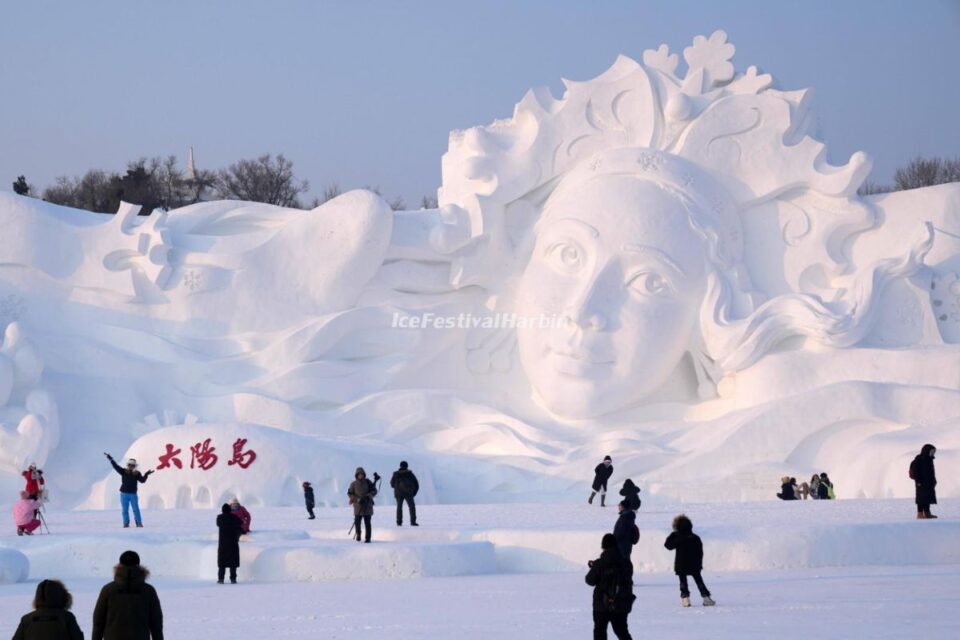
Each site has its own entrance ticket and unique charm, so it’s worth visiting all three if your schedule allows.
Top Attractions & Highlights
Harbin Ice and Snow World
This massive park is the heart of the festival — a glittering city made entirely of ice. Here, you can climb frozen towers, slide down icy slopes, and walk among illuminated sculptures the size of buildings. The colorful light shows at night are simply breathtaking.
Sun Island Snow Sculpture Art Expo
Located across the Songhua River, this area showcases intricate snow sculptures that can stretch over 100 feet wide. Every year, international teams compete to create extraordinary pieces of art, from mythical creatures to modern designs.
Zhaolin Park Ice Lantern Garden Party
Zhaolin Park offers a more traditional side of the festival, featuring hand-carved ice lanterns, sculptures of dragons and pagodas, and warm snacks sold by local vendors — perfect for families with children.
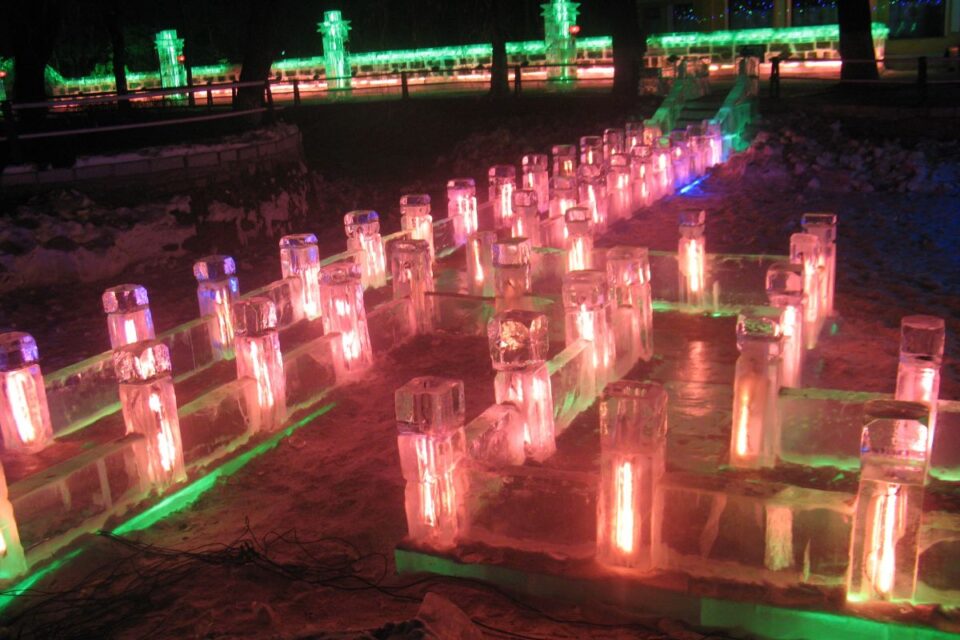
Tickets, Opening Hours & Practical Info
- Ice and Snow World: ¥200–¥300 (varies by season), open from afternoon to 10:00 PM
- Sun Island Expo: ¥150–¥200, open during daylight hours
- Zhaolin Park: Around ¥100, open both day and night
Tickets can be purchased at the entrance or online through official platforms. Dress warmly — temperatures in Harbin can drop below –25°C (–13°F) in January.
Things to Do Beyond the Festival
Harbin offers much more than just frozen art.
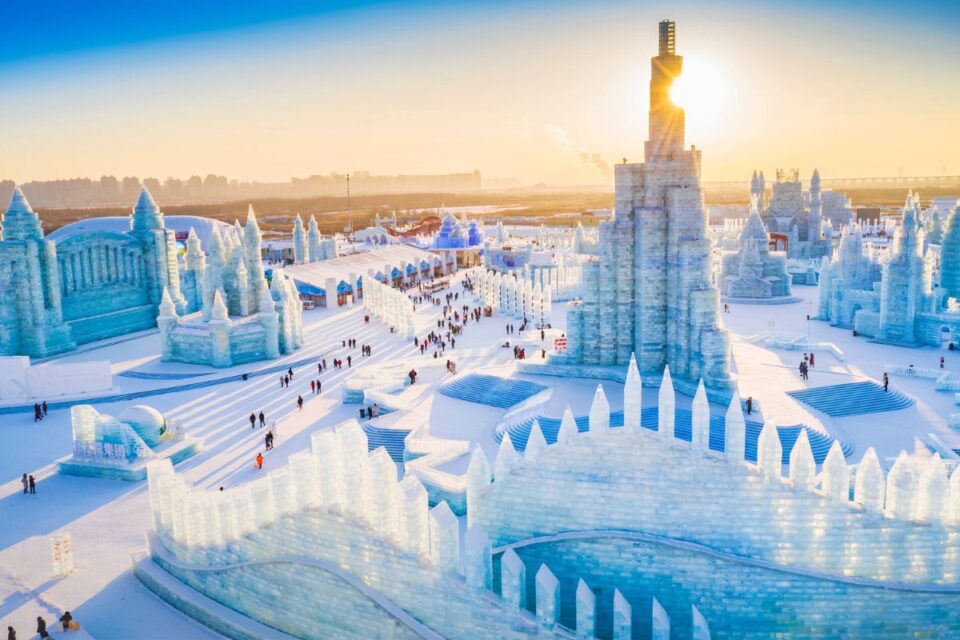
- Explore Central Street (Zhongyang Dajie): A beautiful pedestrian street lined with European-style architecture, cafés, and bakeries.
- Visit St. Sophia Cathedral: A striking example of Russian Orthodox architecture in the heart of Harbin.
- Taste Harbin’s Winter Street Food: Try frozen pears, candied hawthorns, and steaming hot pot — all local winter favorites.
These experiences reveal Harbin’s unique mix of Chinese and Russian influences, making the city one of China’s most distinctive cultural destinations.
How to Get to Harbin & Travel Tips
Harbin is easily accessible by flight from Beijing (2 hours) or high-speed train (5–6 hours). From Shanghai, direct flights take about 3 hours.
Once in Harbin, taxis and ride-hailing apps like DiDi are the easiest ways to get around. The main festival sites are spread across the city, so plan your route in advance.
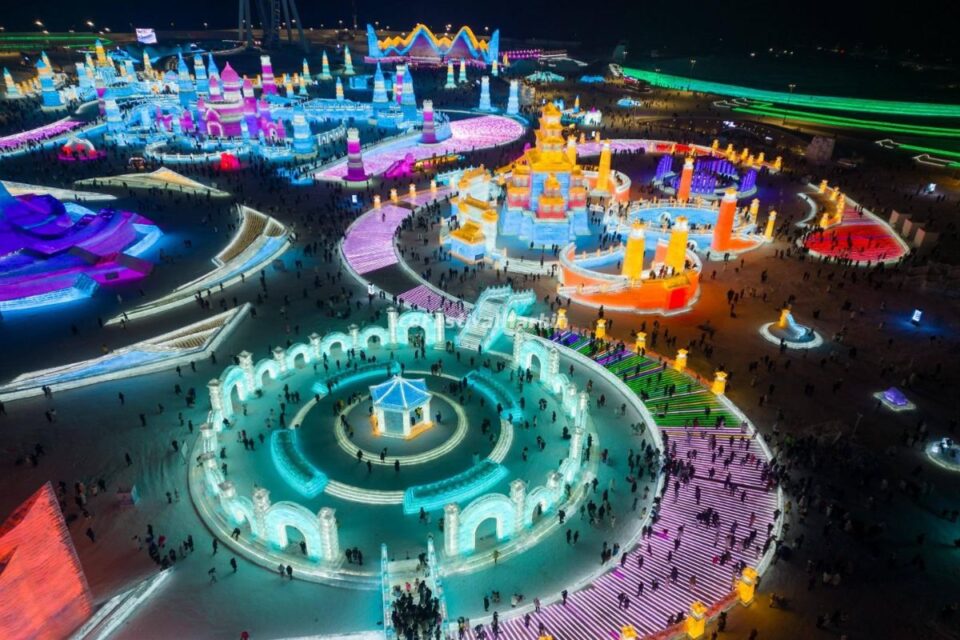
Essential Tips
- Clothing: Wear layered, thermal gear and snow boots.
- Camera Protection: Keep batteries warm — they drain quickly in the cold.
- Where to Stay: The Daoli District (near Central Street) and Songbei District (near Ice and Snow World) are ideal for festival visitors.
Useful Visitor Information
- Best Time for Photos: Visit Ice and Snow World at sunset — the golden light enhances the glow of the sculptures.
- Festival Etiquette: Avoid touching the sculptures; they are fragile works of art.
- Eco-Friendly Travel: Bring reusable bottles and minimize waste in the parks.
FAQs About the Harbin Ice Festival
Q: How long does the festival last?
Usually from early January until late February, depending on temperature and maintenance.
Q: How cold does it get?
Expect temperatures from –10°C to –30°C (14°F to –22°F) — perfect for keeping the sculptures intact.
Q: Is it family-friendly?
Yes! Zhaolin Park and some areas of Ice and Snow World offer safe activities for children.
Q: What’s the difference between Ice World and Sun Island?
Ice World focuses on illuminated ice structures, while Sun Island features large snow sculptures displayed in daylight.
Final Thoughts
The Harbin International Ice and Snow Sculpture Festival is not just a winter event — it’s a cultural phenomenon that celebrates human creativity, teamwork, and the beauty of winter itself.
Whether you’re a photographer chasing the perfect icy glow, a family seeking adventure, or a traveler curious about Chinese winter traditions, Harbin promises an unforgettable experience in the heart of the frozen north.